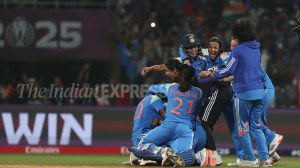Stay updated with the latest - Click here to follow us on Instagram
Maharashtra rape victims wont have to face suspects
Rape victims in the state will no longer be required to come face-to-face with the accused during identification parades in police lockups.
Rape victims in the state will no longer be required to come face-to-face with the accused during identification parades in police lockups. The state government has accepted a recommendation by the Justice Chandrashekhar Dharmadhikari Committee in its report on violence against women that CCTVs could be used to identify the accused.
Officials said the home department had agreed to the recommendation and would seek the views of the law and judiciary department soon. The Dharmadhikari Committee,set up in early 2010,had suggested that two sets of CCTVs be installed,one exclusively for the accused and other persons related to the case and the other for the victim,spot witness and the magistrate.
Additional Director General of Police (Prisons) Meeran Borwankar,who was part of the committee,had suggested that CCTVs should be used during identification parades. After the incident,it is very difficult for a victim to face the accused and identify him. Many a time,even the family is not very forthcoming, she told The Indian Express,adding that the recommendation has been accepted by the state.
Elaborating on its feasibility,Borwankar said the report also wants a person with a neutral opinion and of some social standing to be available with the victim during the identification parade in areas where the CCTV arrangement is not possible. It is a tough task for the victim to trust anyone. In most cases,she feels intimidated even by the magistrate. It is very essential that she has a support at such time, she said.
The identification of the accused through CCTVs is,however,an option for victims as they can always identify the accused in person too.
Maharashta has a dismal rate of conviction in rape cases. Recent data released by the state reveals that the conviction rate in rape cases has been a mere 19.1 per cent,way below the national average of 26.9 per cent (figures of 2009 National Crime Record Bureau and the state home department).
Of the 1,483 cases registered till 2009,only 283 resulted in conviction. In the remaining 1,200 cases,either the accused have been acquitted or the case is still under trial.
Many cases do fall apart due to flawed identification parades. We were convinced that a methodology has to be worked upon and this (use of CCTVs) seems like the most effective and scientific approach, Borwankar said.







